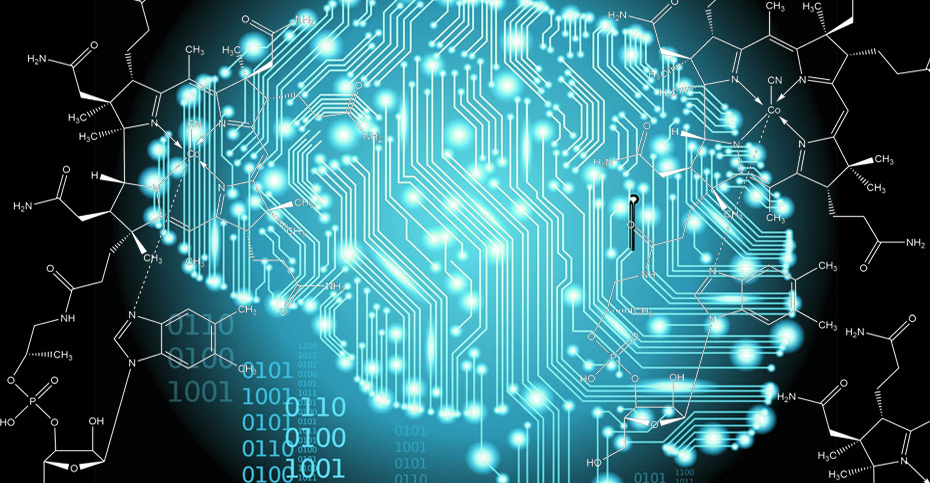Conventionally, video analysis can be divided into two types - standard and situational. In this article we consider different types of video analysis for video surveillance and security systems. When and in which cases it is necessary to use one of them.
But before we talk about the video analysis efficiency for video surveillance, let's understand what do these terms mean.
Standard video analysis utilizes mathematical calculation methods and comparison of image visual characteristics. Higher detector accuracy requires more advanced operation algorithm.
The most widely used detectors that use this approach are motion detectors, direction detectors, cross line detectors, face detector, object counters, service detectors etc.
Situational video analysis utilizes fuzzy logic algorithms. In contrast to the standard video analysis, fuzzy logic algorithm uses instead validity degree instead of "true" or "false". Logical operations are specified by functions, i.e. neurons. So, situational analysis is based on neural networks and, consequently, pattern recognition.
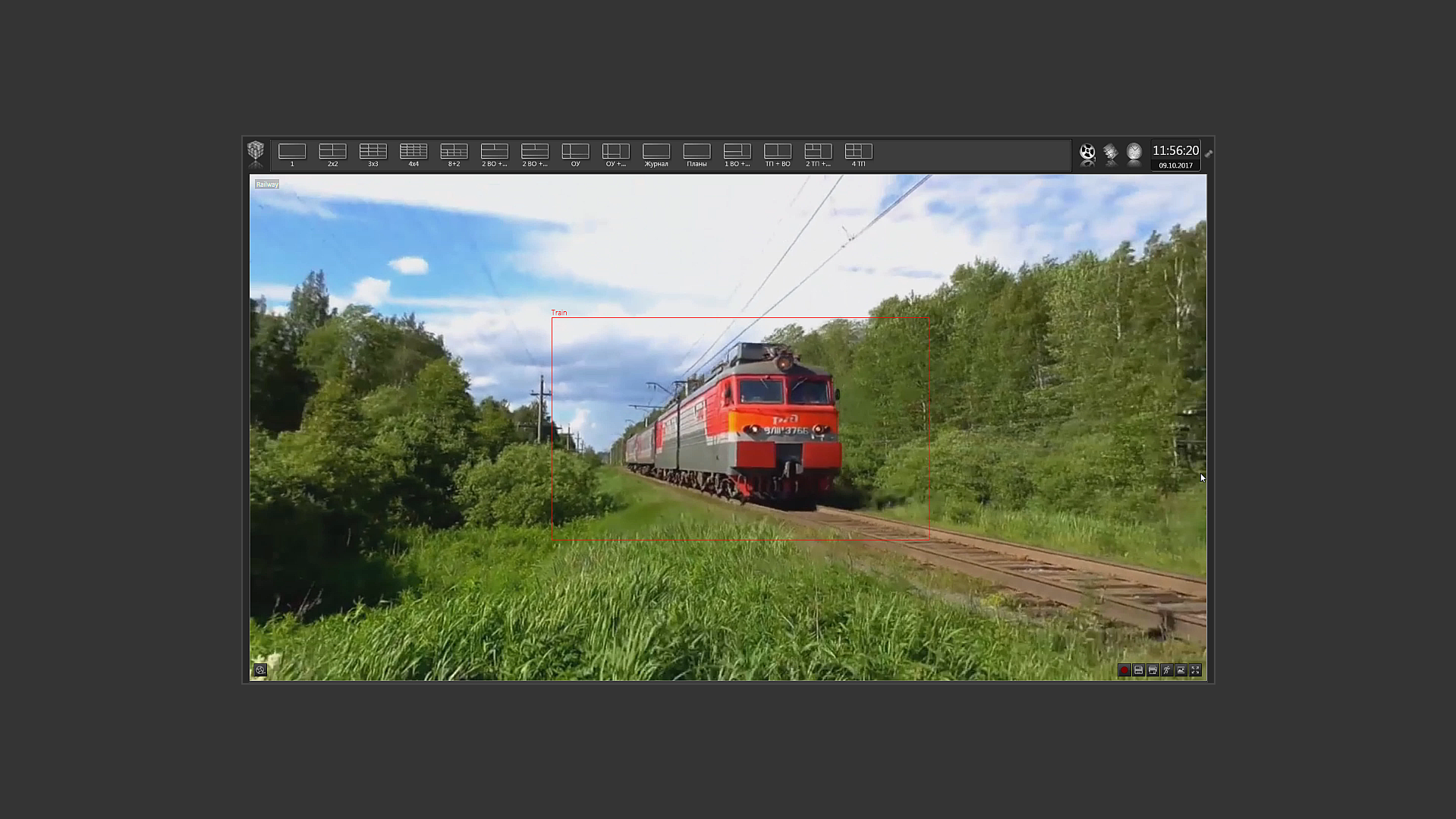
We can demonstrate the difference between these approaches on a simple example. How to count how many persons are in the queue? Using standard video analysis you can calculate number of objects, but are they persons? We can get answer only using neural network technology.
When we use standard video analysis?
Standard video analysis can be effectively used for many applications. In certain cases standard video analysis can virtually replace a person, in other cases only reduce operator workload or give a certain help. When it comes to decision making, this video analysis cannot replace human intelligence, but it helps to efficiently and easily solve specific tasks.
Two main applications for standard video analysis
- Effectively detects alarm events and warns operator.
- Saves space for video records. Video analysis allows to record only necessary data without non-interesting data for user. Using only one motion detector can successfully reduce video archive by 50% and simplify data search during accident investigation .
Standard detectors in VideoNet
First intelligent detectors appeared in the VideoNet system more than 20 years ago while first algorithms that they use were developed at the very beginning of the 90s. And this experience, research and development results were obtained from working with analog cameras, where there were no detectors at all. And we cannot have it if the system immediately began to work with IP cameras. VideoNet utilizes advanced video analysis - an intelligent detectors to automatically identify and respond to abnormal or hazardous events.
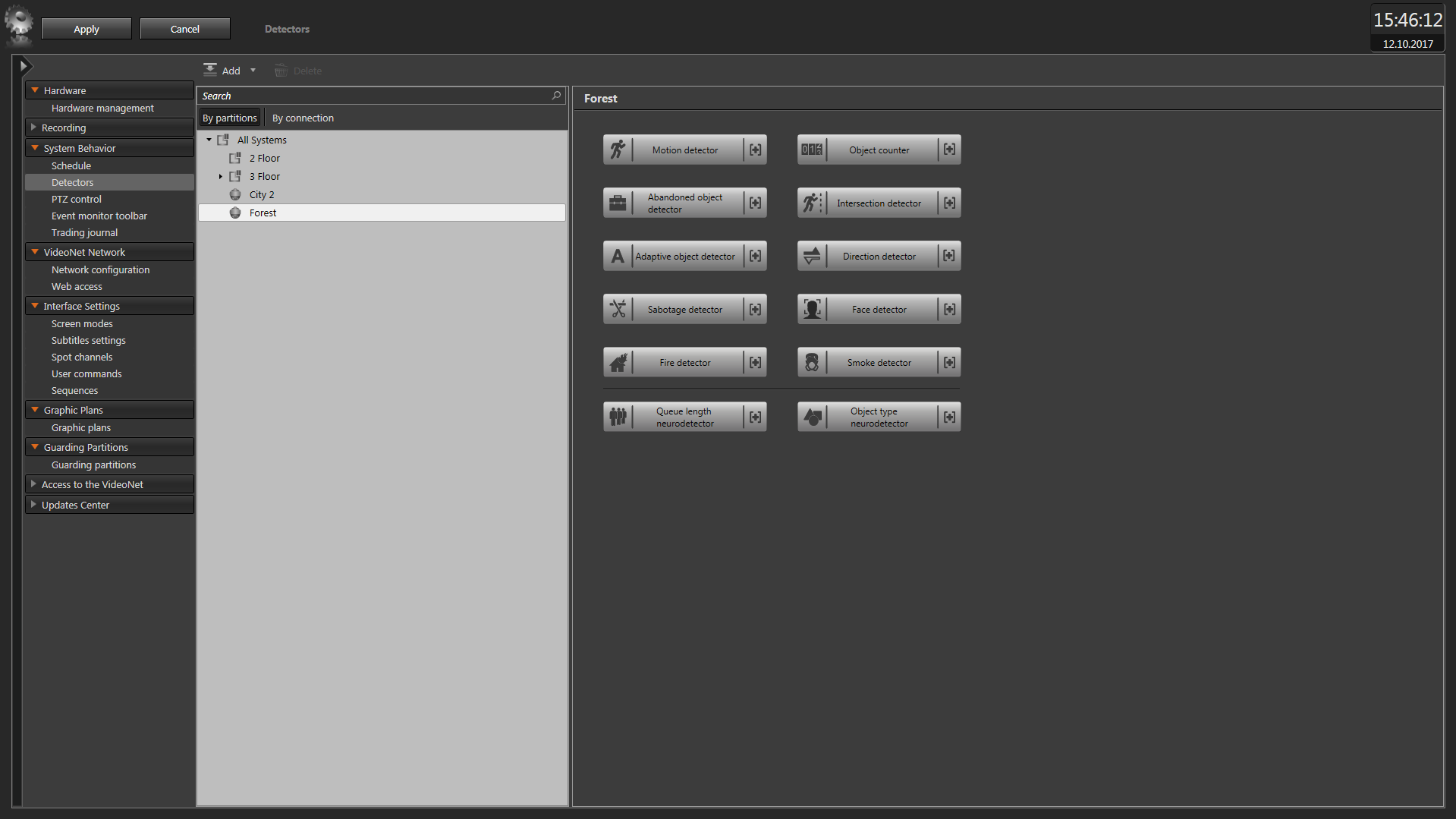
More about VideoNet intelligent video analysis
We understand importance and necessity of using professional video analysis capabilities for video surveillance systems; therefore we include all analysis to any basic license of the VideoNet system.
Standard video analysis - what is inside?
Video analysis methods. Let's consider the main evaluation methods:
- Color histogram method uses color characteristics for image indexing.
- Spatial segmentation. This method selects areas with same properties and associates them with shape, color and texture characteristics.
- Video fragment indexing. This method selects key images from video stream for analysis. Method calculates characteristics: color histograms, object shape and color characteristics, texture measurements. Also fragments are indexed based on camera movement characteristics or scene and object movement.
- Optical flow calculation . It is used to index video data by motion. Direction and speed of motion is calculated at each point of the image.
Situational video analysis using artificial neural networks
What is important to know? The neural network refers to a computer algorithm developed based on human brain principle and has the ability to learn, i.e. adapt to changes. Nature of neural networks assumes the possibility to analyze large volume of indirect and "noisy" data. One of the global problems of our time is continuously growing data exchange, therefore intelligent analysis capabilities for data processing can be considered as requirement and necessity.
Two new neural network detectors in video analysis of VideoNet 9.1 SP1
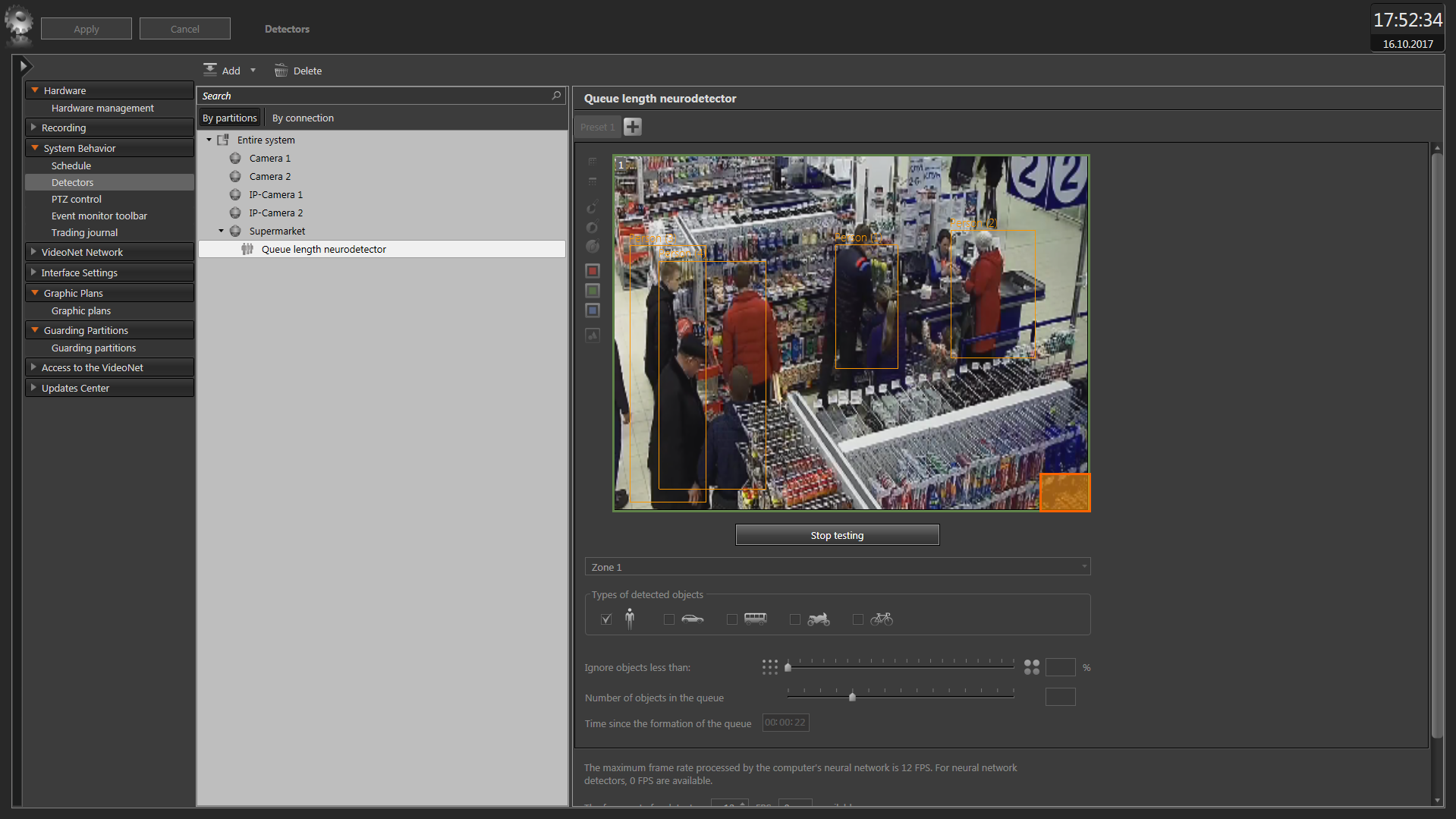
A neural network object detector offers clear identification of the following object types on image: person, car, bus, motorcycle, bicycle, dog, train, and aircraft. Detector operation algorithm includes a unique neural network ensuring high reliability of identification of such objects. The identification accuracy cannot be affected by weather conditions, day/night, illumination etc. The unique feature of the neural network detector is that it can work with PTZ-cameras during Guard Tour. This detector can be used to prevent parking violations, detect person in a hazardous area and other applications where object type identification reliability plays an essential role. Neural network training capability allows our engineers to create systems that can identify any user-defined objects types.
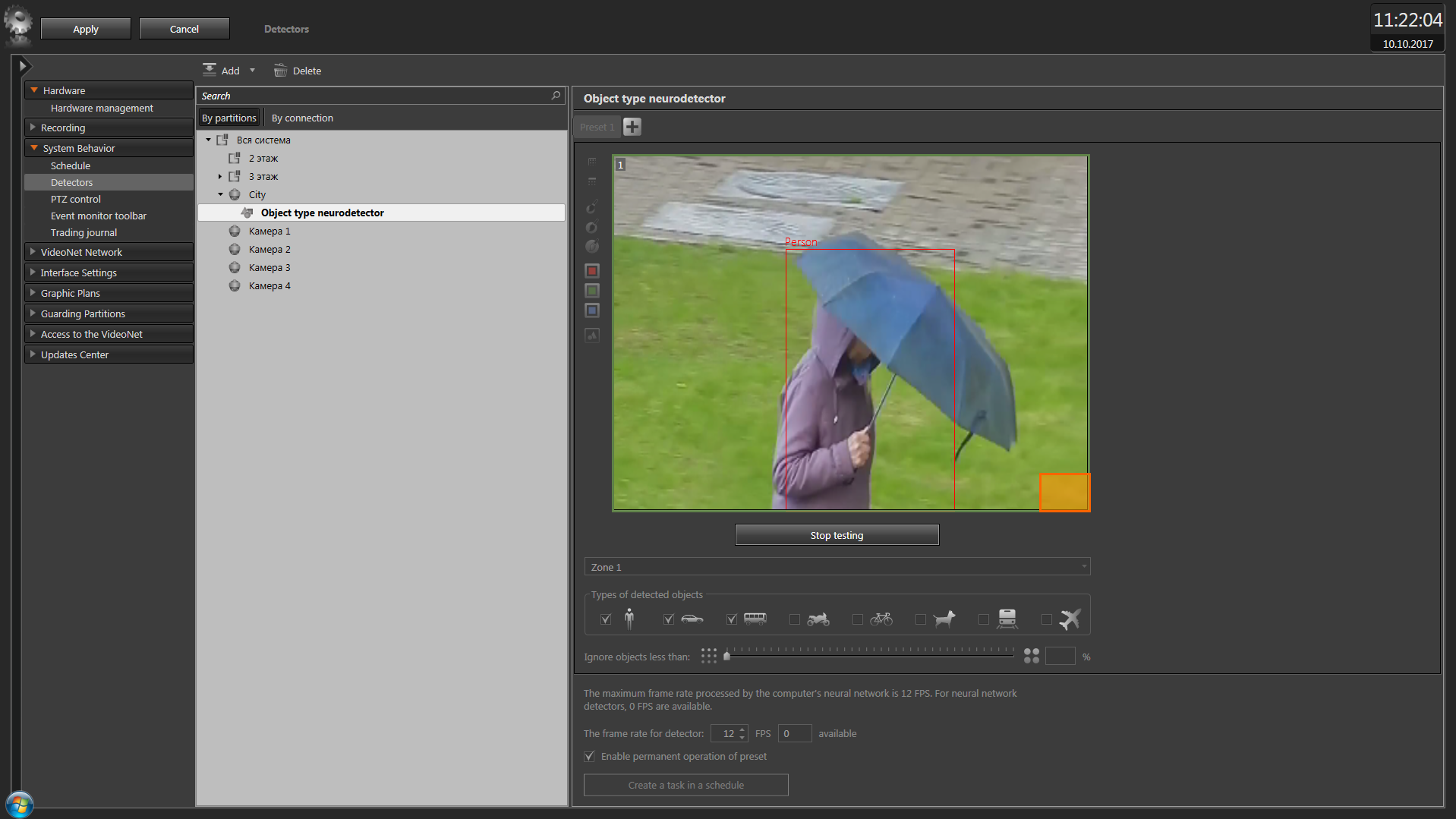
A neural network queue detector provides prompt response to the queue consisting of selected object types in the controlled area. Operating algorithm of this detector also utilizes a neural network. It provides clear identification of the following queue types: person, car, bus, motorcycle, and bicycle. This detector can be used to manage personnel or equipment operation for different service applications (retail shops, customs terminals, parking lots etc.).

